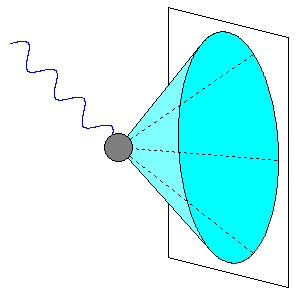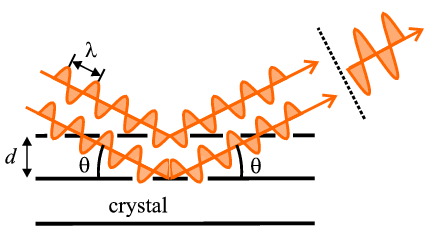 |
What is Diffraction? |
 |
What is Diffraction? |
What is Diffraction?
This question will be answered in different ways and to different depths throughout the course; but we need to get started and a simplistic view is needed before we discuss powders and powder diffraction.
If we shine radiation such as X-rays onto an object such as a liquid, gas, or amorphous (glass-like) solid, the radiation is scattered in all directions by the object (see illustration). However there is little detail in such scattering, indeed such scattering could be perceived as a rather featureless background fog (examples later), and relatively little useful information can be gained.
However when the object is a crystal then, as Laue elegantly showed, the scattering is no longer featureless but forms sharp spots on a photographic film (see illustration). This collection of spots is called a diffraction pattern. In simplicity, these spots arise because the constituent atoms within the crystal scatter "in phase" (i.e. more intensely) along certain precise directions; these more intense "in phase" X-rays record their passage as spots on the photographic film. The diffraction pattern is an important item because it contains, in principle, the information required to deduce the positions of all the constituent atoms within the diffracting crystal. Clearly we will discuss this subject at greater depth with examples later.
 |
 |
| Scattering | Diffraction |
|
© Copyright 1997-2006.
Birkbeck College, University of London.
|
Author(s):
Paul Barnes Tony Csoka |